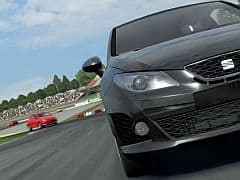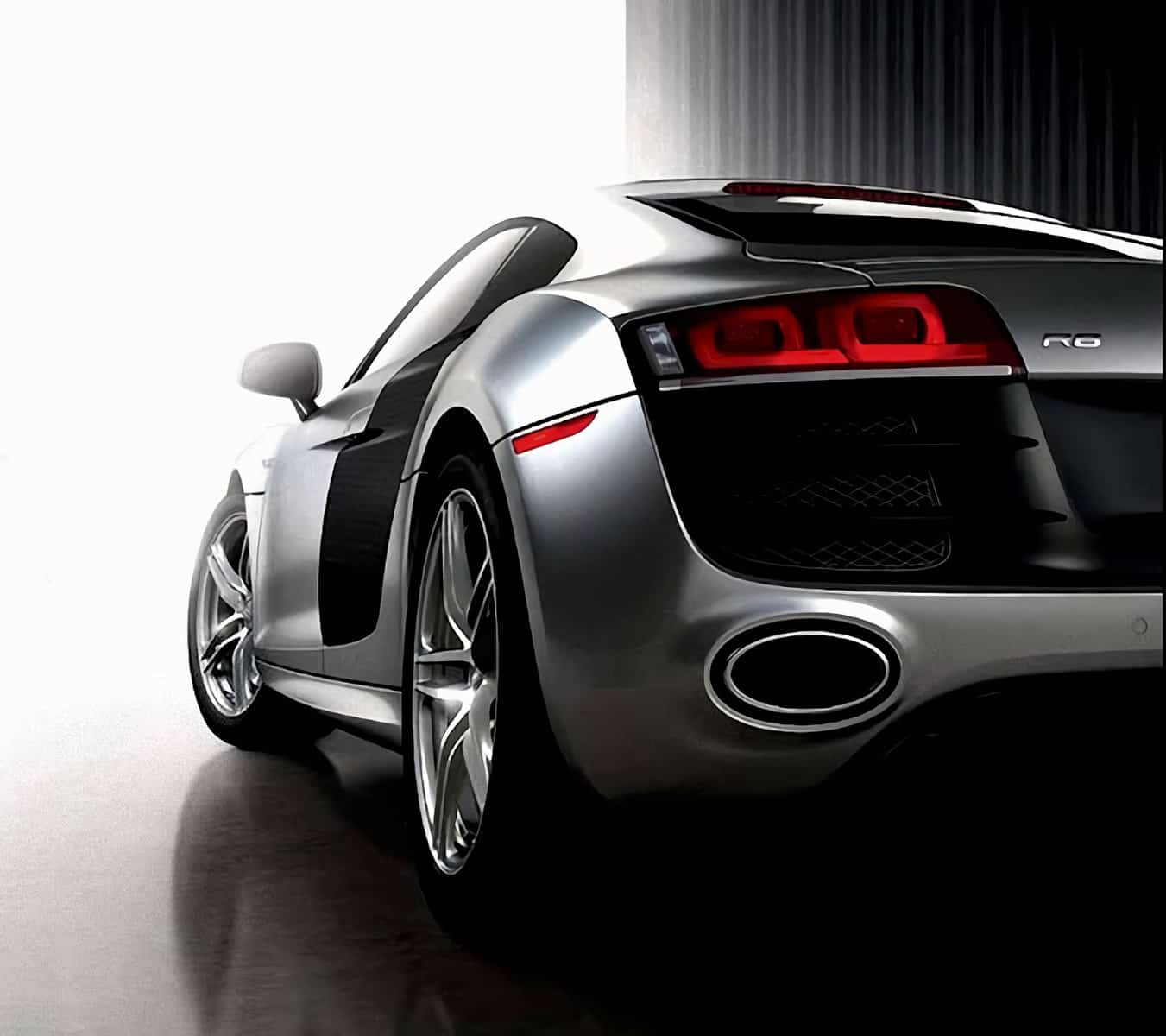You can trust VideoGamer. Our team of gaming experts spend hours testing and reviewing the latest games, to ensure you're reading the most comprehensive guide possible. Rest assured, all imagery and advice is unique and original. Check out how we test and review games here
Turn 10’s Dan Greenawalt is the director of Forza Motorsport 3. Last week Microsoft took us go-karting to celebrate the forthcoming release of the game, and while in the pits we took the chance to chat to Dan about the limits of the 360, community development, and the changing characteristics of sim and arcade racers.
VideoGamer.com: The graphics in Forza 3 are pretty spectacular. How close are you to maxing out the 360, in terms of what the console can do?
Dan Greenawalt: You know I actually get asked this question a lot, and I think there’s kind of a misunderstanding about how game development works. It’s not like a vessel of water, that you fill it up with so much and then you can fill it up a bit more. When it comes to hardware you always use 100 per cent. Even to make a little arcade game, you’d use 100 per cent of the hardware. But when you’re first party, and when you’ve got a really clever development staff that’s world class, hired from all over the industry, then you learn tricks. It’s like Tetris. With Forza 2 we were the first game on the 360, at least that I know of, that could do 60 frames per second. And we did a lot of things wrong when we built our model. We did some things right, but just like a jigsaw puzzle, the first time you build it, it takes an hour, and the second time you build it, it takes half an hour. Eventually it just takes 15 minutes, because you learn how to build it faster.
For the Xbox 360, we had a physics engine that we knew how we’d built, so we could deconstruct it and make it better. We knew we had a graphics engine that ran at 60 FPS, and we knew we could deconstruct it and make it better and more optimised. But the real secret is the development community. Especially in Europe and in the States, development is a very, very open group. We share notes, we visit each other’s studios, we go and talk at GDC, and we share our secrets fairly openly, particularly about optimisation – because we’re all in the same boat. Optimisation is something we all have to do. It sucks, it’s hard, and it’s a really difficult challenge. So we’re able to learn from Epic, and learn from Lionhead, and from Bungie, and from many of our third parties – like BioWare – about how to make our engine better. And then we can share things with them that we’ve learned. So, have we maxed out the 360? Of course not. It’s a really powerful system. It’s the same system, right? And that’s the thing about Tetris. You’ve got the same board, but you can fit more blocks if you’re clever about how you place them.
VideoGamer.com: My next question follows on from that. There was speculation last week that the next generation of consoles might not arrive until as late 2013. Would that present any problems for you?
DG: Well, for us the hallmark of Forza Motorsport 3 is innovation. Obviously we look at what our competitors are doing, like rewind. Forza, Grid, Dirt – we all have it. We added the green line in Forza 1 and Gran Turismo and Need For Speed then added it. So part of that is just watching your competitors and then raising the bar. That’s actually just a small part of the task. The bigger part is what we’re doing with the community, and what we’re doing with approachability. Taking not just the racing genre, but the entire interactive entertainment group and saying, “look, this is part of social networking on the console”. UGC, building a larger community… We looked at eBay, we looked at Facebook, we looked at Yahoo Stores. We looked at lots of different models. But other game companies are going to look to Turn 10 and say, “oh, this is how they did it. We didn’t like that bit, we think we can do that better”, which is great – that’s how development happens. I think if Forza was just about great physics and great graphics with a ton of cars, if that was it, I would not work here. That’s not where I want to be. Where I want to be is pushing new features, solving creative problems, working with a fantastic team on innovation. If all you’re doing is doing great physics, great graphics and a lot of content, then you need a big team to make a lot of content, and once your hardware is maxed out in terms of your cleverness, you’re done. Even more so if you’re in an insulated team, if you don’t go share ideas and be part of an active community – because then you have to re-invent the wheel! We’ve seen that a lot with multiplayer games. In the Western side, the US and in Europe, we look at scoreboards, parties, all the new things… we don’t just re-invent the wheel. Just making competitive multiplayer that can handle low latency, we conquered that ten years ago! A lot of developers are still trying to figure out, “ah, how can we have that many cars and tracks going at the same time?”. It’s like, shit, we conquered that with PGR! We just need to keep learning. [Pause] Sorry, that’s a long-winded answer to your question…
VideoGamer.com: No problem.
DG: I don’t think we’re anywhere near the end. It just switches the focus from graphics and physics. Well, physics is always of paramount importance to us, so we’re going to keep re-inventing cutting edge technologies for physics. But it’s going to come down to social interaction. Community, cool features. Some other racing game may develop something that’s a really cool feature, and we’ll look at that too.
VideoGamer.com: Which feature of Forza 3 will leave the greatest legacy to the genre, do you think?
DG: Well obviously we didn’t start rewind, but I think our take on rewind is slightly different. I think that’s going to be a game-changer, although I don’t think it’s a revolution – it’s an evolution. I think the social co-ordination and the social interactions that happen around our community features are going to be something where it’s not like [it’s important to just] the racing genre – in fact, I think there will be some racing games that have to reinvent the wheel, and they won’t even look at it because they’re just stuck in the stone age. But I think the more progressive and triple-A studios out there, whether they’re making a RTS or a first-person shooter or a platformer, they’re going to look at Forza 3 and say, “huh, that’s how we do that”. Our livery editor was the same way. We had the layer system, and other racing games did it, but you also see it in mech games. You see it in painting your armour in different games, where people just said, “hey, that’s a good paradigm! We should model it”. And that’s what good development is. You don’t say, “we have to invent everything”. That’s stupid, right? You look around and you go, “I was playing World of Warcraft and they have a good auction house. We can make it better by doing this, or we can make it different by doing that, but the core idea was fantastic”.
VideoGamer.com: You worked on Project Gotham Racing. Would you like to go back to something like that, a game that was a bit more arcade-like than Forza?
DG: I actually think that the definition of arcade versus sim has totally changed. Graphics have gotten better, games are more licensed, and even arcade games are getting damage. The physics are getting better because the platforms are stronger. Our approach to building a great sim engine, and putting in layers, has made obsolete the idea of an arcade game that’s still licensed and has beautiful graphics. If you’re going to do an arcade game, put in rockets and explosions and crazy shit and don’t do licensed cars! Then you can do some crazy stuff. But that old idea that there’s arcade versus sim, I think that’s people being short-sighted about the fact that you can make a game that’s really exciting, really fun, really entertaining, but the core is a simulation game, and the graphics are beautiful.
VideoGamer.com: Thanks for your time, Dan.
Forza Motorsport 3 will be released on October 23, exclusively on the Xbox 360.

/https://oimg.videogamer.com/images/c3ef/forza_motorsport_3_122.jpg)






